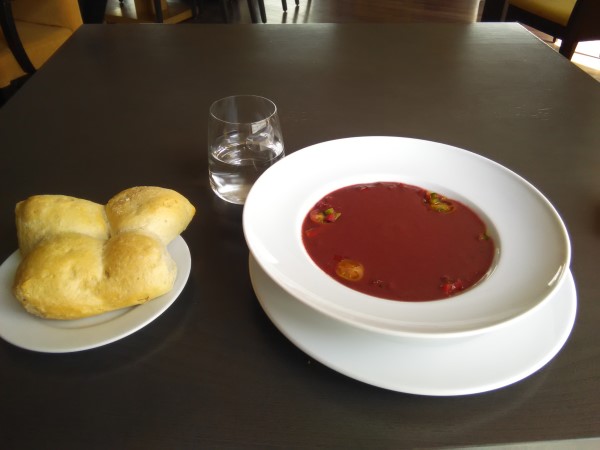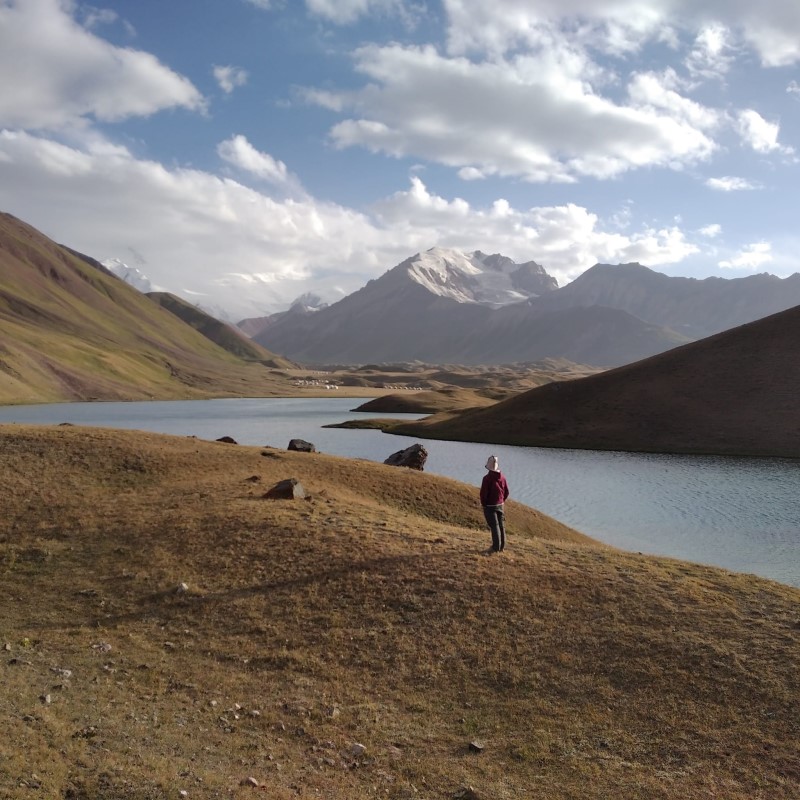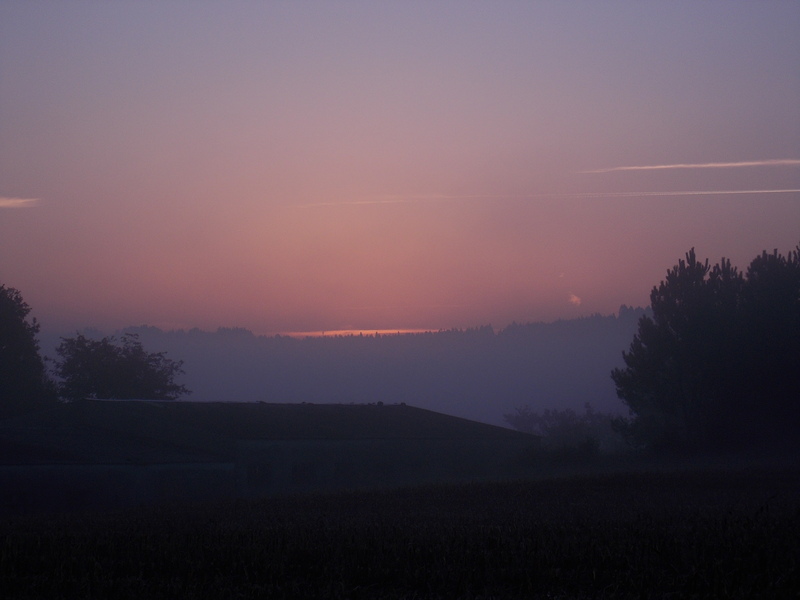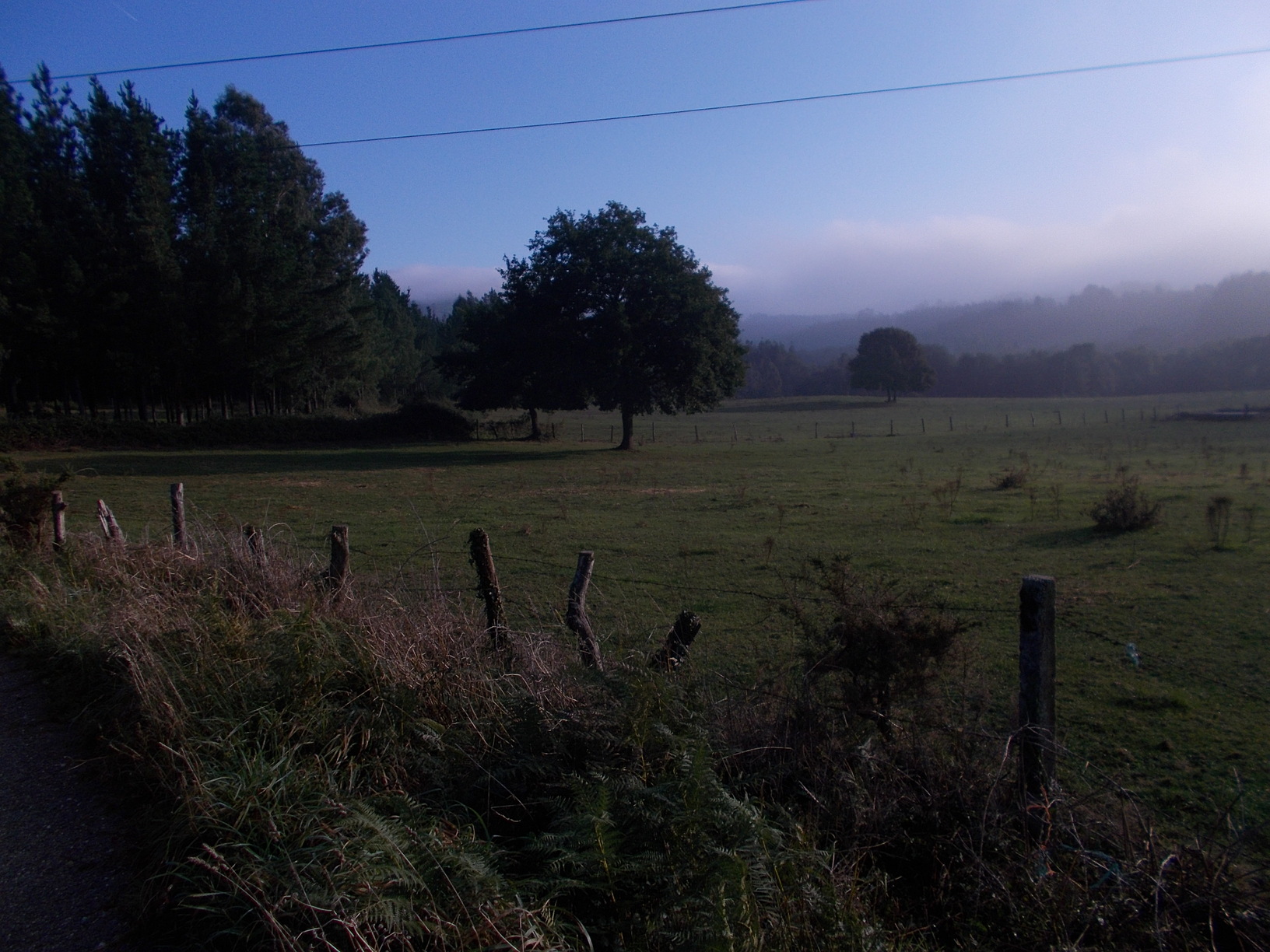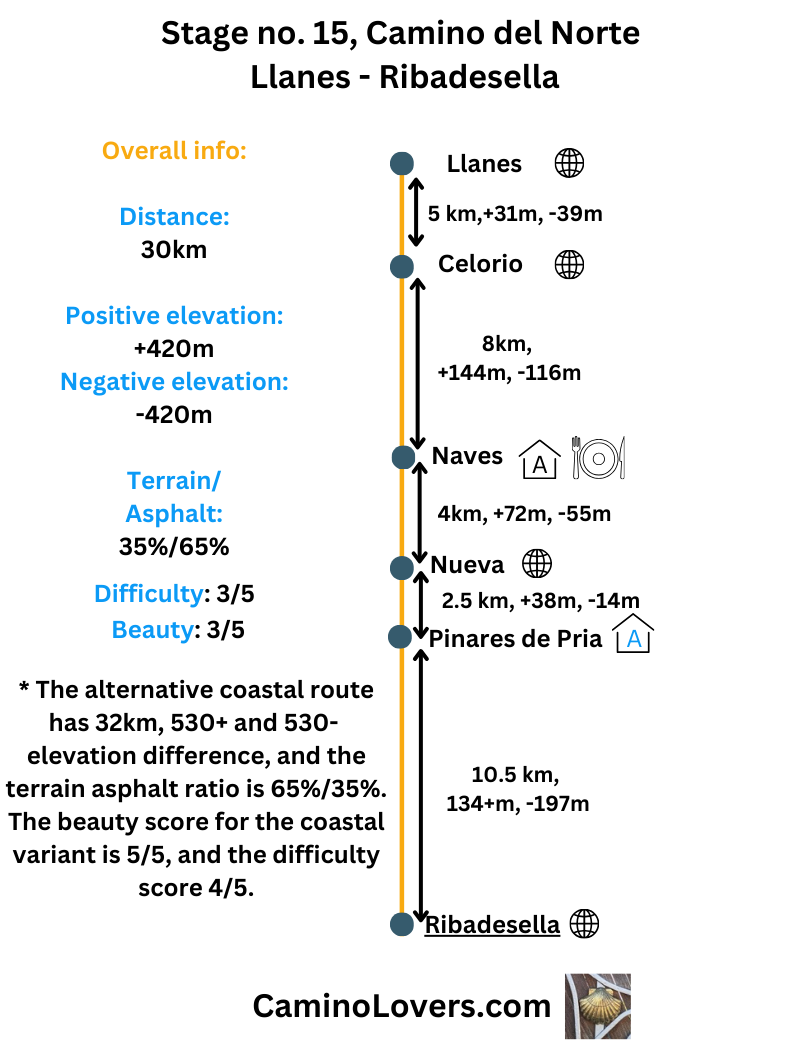
Basic Details
- Starting point: The city center of Llanes.
- Ending point: Iglesia Santa Maria Magdalena, Ribadesella
- Availability of alternative routes: Yes, you can follow the E9 long distance hiking path, all the way from Llanes to a small village with a pretty similar name, Llames :). This path is marked with red and white stripes, and goes more closer to the coast than the official Camino does on today’s stage. The beaches and bays in this area are incredibly beautiful (as you can see on the photo gallery below), and if you happen to walk this stage in a good weather, and aren’t too low on energy, I definitely recommend the coastal variant.
- Distance: Official camino route: 30 km (download GPS here). Alternative coastal route, following the E9 path until Llames: 32 km (download GPS here).
- Elevation difference: Official Camino route: +420 m, – 420m , Alternative coastal variant: +530m, – 530m.
- Link to online map: Official camino route: here. Alternative coastal route along the E9: here.
- Difficulty score: Official camino route: 3/5. Coastal variant: 4/5.
- Beauty score: Official camino route: 3/5. Coastal variant: 5/5.
- Terrain/asphalt: Official camino route: 35%/65%. Alternative coastal route: 65%/35% (once again, following the alternative route and sticking close to the coast will allow you to relax more from the endless asphalt walking that is typical for many stages on Camino del Norte).
- Next stage: Camino del Norte, stage no. 16, Ribadesella – Priesca.
- Previous stage: Camino del Norte, stage no. 14, Colombres – Llanes.
Elevation profiles for the routes
 – “Official camino route”. As you can see, there are a couple of steep ascends and descends, but all in all for 30 kilometers the elevation isn’t drastic in any way.
– “Official camino route”. As you can see, there are a couple of steep ascends and descends, but all in all for 30 kilometers the elevation isn’t drastic in any way.
 – Alternative camino following the E9 for a good part of the day (please not that on some parts, E9 coincides with the marked Camino) is a bit more hilly, but definitely nothing that should discourage you from enjoying this beautiful coastal walk…
– Alternative camino following the E9 for a good part of the day (please not that on some parts, E9 coincides with the marked Camino) is a bit more hilly, but definitely nothing that should discourage you from enjoying this beautiful coastal walk…
Advanced info about the stage
- Trail marking: We are in Asturias now, and the trail marking is much better in general. However, they have changed small bits of the Camino several times in recent years along this stage, and hence it can happen that you come to a crossroad with yellow arrows pointing in two directions. In such a case the fresher one is typically the actual one, the new marking, but in all these cases the routes eventually coincide at some point, and you won’t get lost. If you follow the alternative route (E9, coastal route), once you reach Llames you will walk a bit without any trail marks, since you need to go south to connect with the Camino. In such a case your best bet is using a good mapping application for the Camino, or download and follow our GPS for this stage, alternative route.
- Alternative route info: This one isn’t really marked on other Camino apps, guides, or books as an alternative route for pilgrims. However, it is a marked route (with red and white stripes), the European long distance hiking path E9, and it can definitely be walked and followed without any difficulties. Following the alternative route on this stage means two things for you:
- No. 1: You will spend much less time walking on asphalt.
- No. 2. You will get closer to the many amazing beaches and bays on the coast between Llanes and Ribadesella. Needless to say, the way is 2 km longer and will add some extra elevation to your walk, but I still believe it is worth taking it, especially on a nice sunny day.
- Natural places worth seeing: As you can see on the gallery below, this part of the coast is full of natural paradises. I especially recommend:
- Playa de Polombina: Next to the village of Celorio, with a monastery Monasterio de San Salvador just at the edge of the beach, making for a breath-taking scenery. Now monks do not live there anymore, and a few people know that one of the buildings of this monastery actually served as a pilgrim albergue for some years. Sadly it is not the case anymore, but you can still marvel at the beauty of this place.
- Playa de Torimbia, a nudist-friendly beach (not exclusively nudist!, so you do not have to worry going there) is one of those beaches that imagine a scene of a paradise from a movie… A perfect shape, a beautiful sand, and magical natural surroundings. To pass by this beach you need to follow the alternative coastal route, since regular camino does not go there. There is also a bar on the far side of the beach, open all summer.
- Bufones de Pria – We talked about other “bufones” in the description of previous stage (from Colombres to Llanes), bufones you pass directly on your Camino, without a need of making any detour. For the bufones today you have to follow the E9 again (the alternative route), and while the place is incredibly touristic, it is well worth making a short detour to see it (about 500 meters). The scenery of limestone cliffs with sea-water striking high up through the cracks is one hard to forget… There are several restaurants and bars nearby (one of the reasons why it is so touristic :)), and some pilgrims following the coastal route make a lunch break here, before descending south and joining again with the official Camino route…
- Historical, architectural, and culinary places worth seeing: You will pass through several nice small chapels and churches along your way, regardless of whether you take a coastal route or follow the official Camino. If I should pick two spots to see, my choice go to two monasteries (one of them half in ruins), the Monasterio of San Salvador near Celorio, and the Monastery of San Antolin de Bedon. But many of the small chapels you will pass by in the villages are also super nice for any architecture and history lover. The only downside is that they are almost always closed, and hence you cannot see an interior with the icons and everything. The final city of today’s stage, Ribadesella, doesn’t have a particularly impressive historic center, but there is a cave called Tito Bustillo Cave, right in the city, about 400 meters from the Camino, with wall paintings almost 30,000 years old. You can find more information about the actual opening hours and get the tickets on the nice English website they run for this purpose. In my opinion the cave is worth a visit, especially if you stay for the night in Ribadesella.
- Camping/bivouac options on this stage: Generally speaking, this stage is great for wild camping. Especially on the coastal route, you have many beaches, small trails, several small chapels with a porch, and while this is a touristic area, you will find many hidden spots great for camping. By far the best spots for camping, however, are located on the coast on the last 8 km before Ribadesella, starting from Cueres onward. Here any right turn you take from the Camino in the direction of the coast, you will find spots that aren’t touristic (there is no marked trail or anything, and every tourist goes to the Bufones de Pria), and offer a decent option for pitching a tent. One of the zones I really like is the Pena Flecha, another one La Ventatona. When it comes to organized camping places, you have several options, and I recommend the following two:
- Camping Palacio de Garana: Dog friendly, right on the alternative camino (the coastal variant) and 1.5 km detour from the official camino route. More for families and people with cars than for pilgrims, but they should accept you. If you do not have a tent you can get a small cabin for a decent price, especially if you walk with a companion. Relatively close to Bufones de Pria (20 minute walk), the biggest tourist attraction in the area. Has a reputation for cleanness and a good organization overall.
- Camping Playa Sauces: Right on the Camino, on the far edge of Ribadesella, many pilgrims do actually stay in this camping. They have a pilgrim discount, are dog friendly, and even if you do not have a tent they have “a dorm tent” with bunk beds for pilgrims. The location isn’t great, and the cleanliness of the facilities could be better, but for one night on the Camino, in a zone with very few albergues in general, it is great that this camping exists, and I do recommend it.
- Dog friendly score: 4/5, especially the coastal variant. A green stage, on the coast with little asphalt walking as well. Many places with a shade, several river-crossing with easy access down to the water where the dog can drink/cool itself. Dog-friendly camping places along the way. Really not too much can get wrong with your dog here, and your dog should enjoy this stage!
- Special remarks: Nothing really. Just enjoy this beautiful stage, and venture to the coast as often as possible, since it is really worth it :).
Accommodation options on today’s stage
* The infographic displays the number of pilgrim hostels (only pilgrims allowed), hostels (anyone allowed, shared rooms), and other accommodation options (hotels, pensions, etc, private rooms) in each point along the route, together with price range. For exact explanation of the pictograms we use check the explanations page. Below the infographic you will see our recommended picks (up to 3 pilgrim options and 1-2 “privacy” options, maximum five) for the stage, together with important information (but not too much info, just what you need :-)).

Recommended places to sleep along this stage
Pilgrim options:
- Albergue La Casa Verde, Poo (km 3). Location and reviews on Google maps here. 16 beds, from 16 euro/night (can get up to 25 euro in summer). A good hostel for anyone who did not get a bed in Llanes, or who prefers to avoid this beautiful yet super-crowded town in summer. The place has decent reviews on pilgrim platforms but has a new owner since 2024, hence it is hard to say how thins will change. Typically they do change to better with new owners :). Check-in from 3pm to 10pm. Recommended way of making a reservation: phone call, +34 611 823 985.
- Albergue Casa Rectoral, Pineres de Pria (km 20). Location and reviews on Google maps here. A big albergue, 48 beds, prices from 12 to 16 euro/bed. Amazing location, good reviews across all pilgrim platforms. They do not accept reservations, and there are no services around, hence you should bring your food (or rely on food from vending machines on site). However, it is great to have this albergue, especially since there aren’t many pilgrim places in the zone. Check in from 2:30 pm to 7pm.
- Albergue La Llosa de Cosme, Pineres de Pria (km 20). Location and reviews on Google maps here. A really nice albergue with a familiar atmosphere, and only 6 beds. Being such a small space makes it extra special for pilgrims. Price 12 euro/night. There aren’t any services nearby, so it is important to buy your things in Nueva (km 17). Check in from 2:30pm to 9pm. Recommended way of making a reservation: phone call, +34 609 861 373.
Privacy/luxury options:
- Hotel Villa Rosario II, Ribadesella (km 30). Location and reviews on Google maps here. Close to the beach, modern, very good reviews, decent prices for pilgrims (starts at 60 euro/room). Check-in from 3pm. Recommended way of making a reservation: booking.com.
- Hotel Arena, Ribadesella (km 30). Location and reviews on Google maps here. A nice family-run hotel frequented by pilgrims. Rooms from 55 euro/night (prices changes during the year). Located on the beach, good reviews, and definitely a pilgrim friendly place. Recommended way of making a reservation: phone call, +34 667 409 224.
Pictures from the stage
* The first 3 pictures are from an official Camino, the rest is from the alternative way on the coast (mostly following the E9 long-distance hiking path).

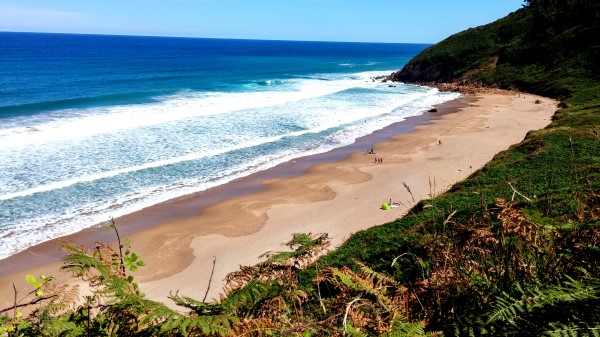
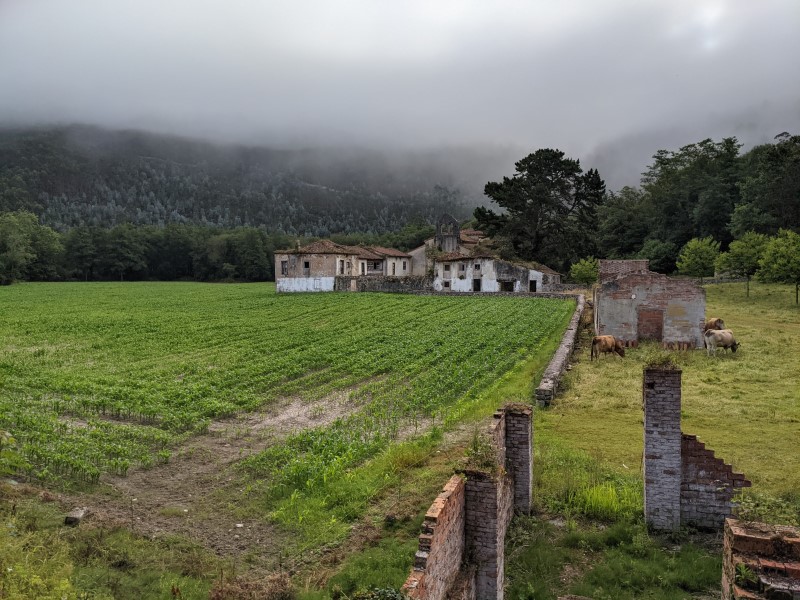
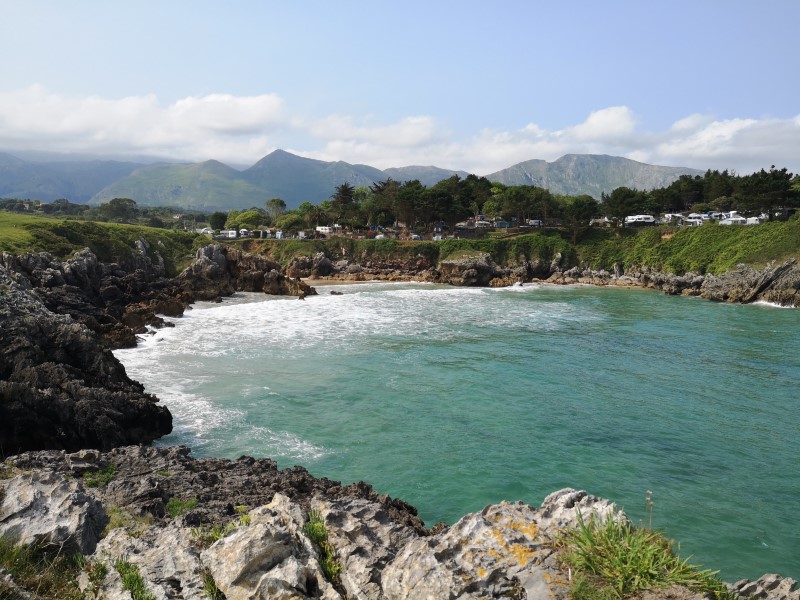

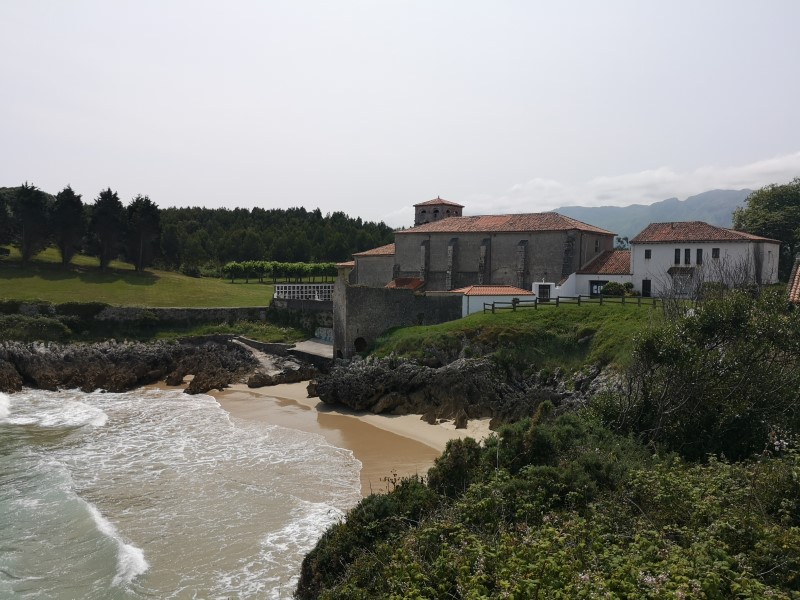
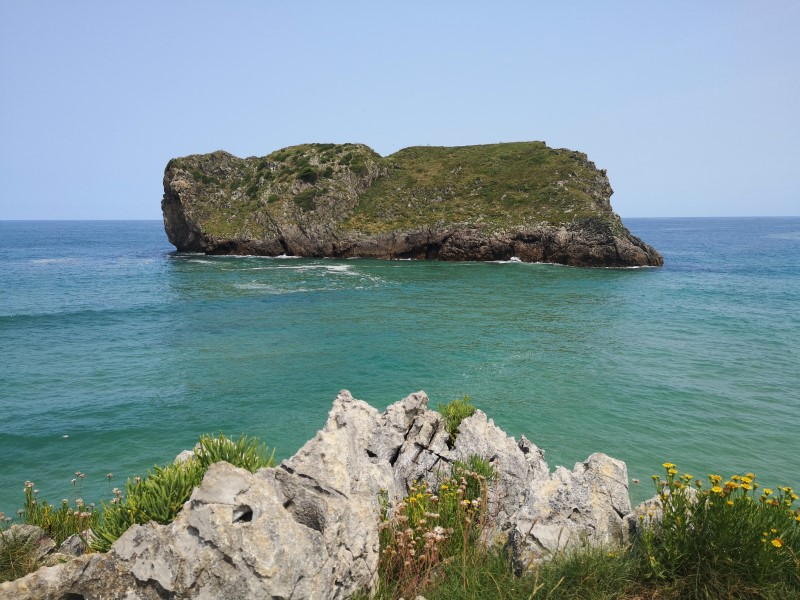
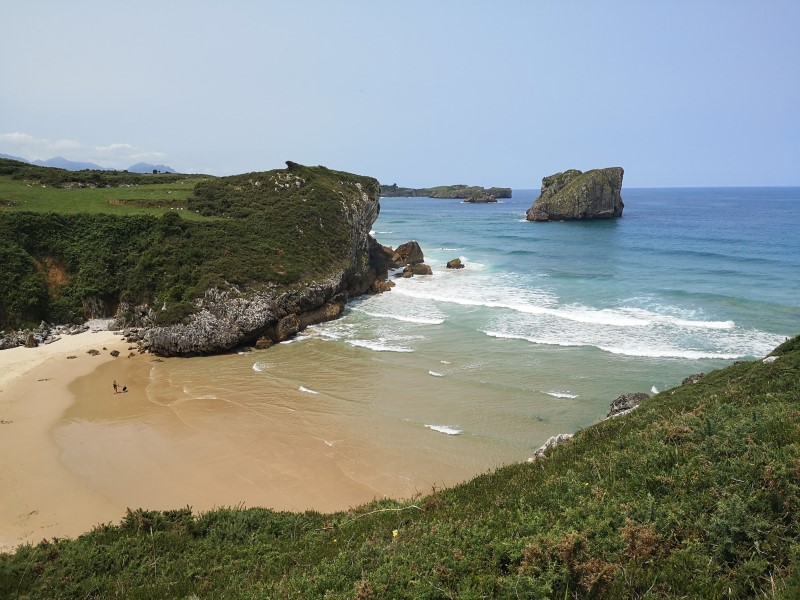
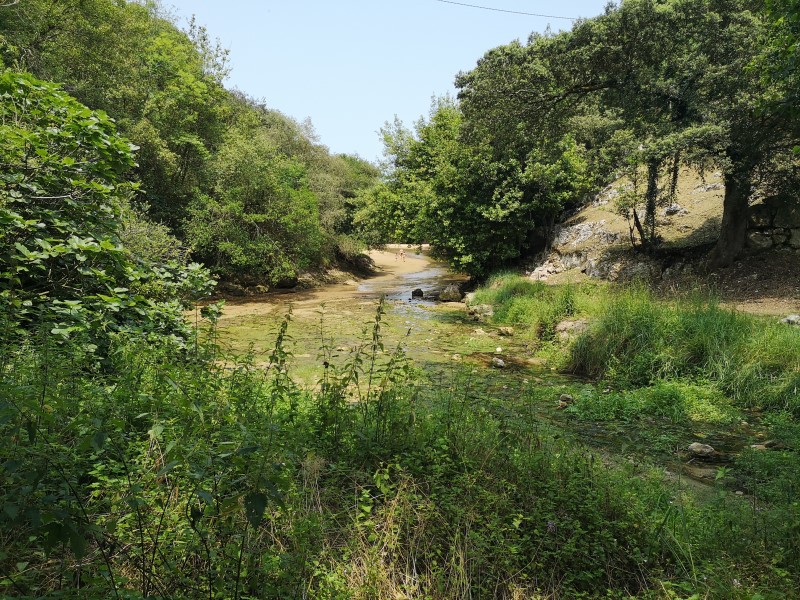
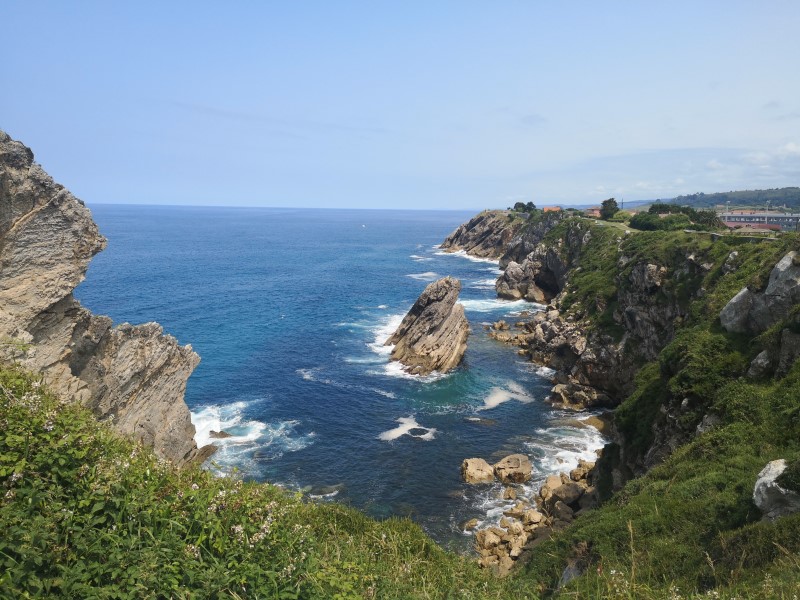
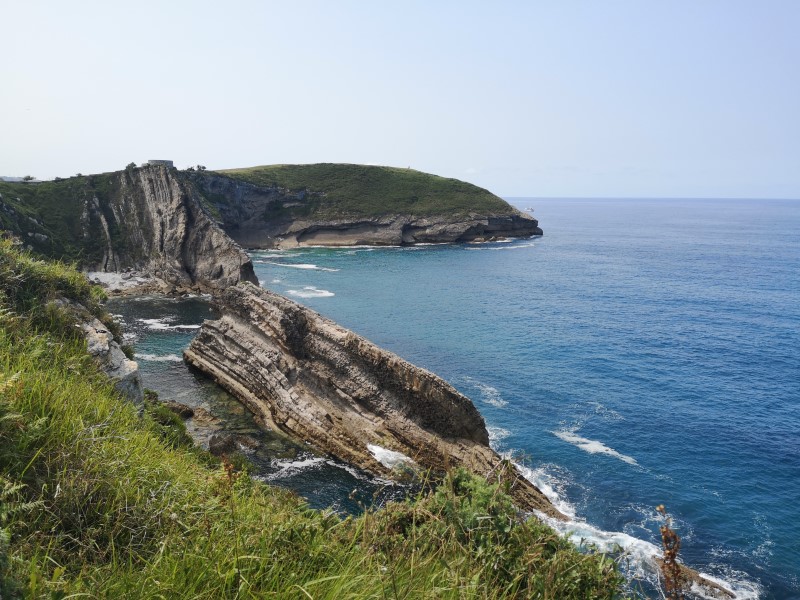
Few tips at the end
- There aren’t really any pilgrim albergues on this stage (hopefully it will change soon), except of two in a small place called Pinares de Pria. One of them has a big capacity and nice location, and it is run by a catholic church. You can check it our here. The other one is more “family run”, with only six beds, and you can check it out here. The second one accepts reservations. Hence if you want to stay in a pilgrim place, you should end today’s stage in Pinares de Pria instead of Ribadesea.
- Even the E9 path doesn’t always follow exactly the coast. On this stage you’ll pass many stunning beaches, such as the beach of Poo, beach of Borizo, beach of Torimbia, to name just a few. Anytime you feel a calling, venture as close to the coast as possible. The small unmarked trails will eventually always connect back to the E9 path, and being truly close to the coast you can not only marvel at these natural beaches, but also descent and have a swim at one of them…
- Do not count on the youth hostel in Ribadesella, which is shown as a pilgrim option in many camino guides. In reality, this albergue accepts big groups and many times even when you call in June, it is fully booked until the end of September. Then, for the off season, it often closes down… If you want to stay in Ribadesella, it is better booking some hotel (ideally sharing the costs with another pilgrim), or try your luck in the camping Suances, at the far end of the town (2 km form the center).
Next/Previous Stage
- Next stage: Camino del Norte, stage no. 16, Ribadesella – Priesca.
- Previous stage: Camino del Norte, stage no. 14, Colombres – Llanes.
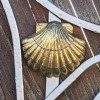


![Ultralight Packing List for Camino de Santiago [2025 Edition]](https://caminolovers.com/wp-content/uploads/2022/03/altra-shoes-640-x-480.jpg)
